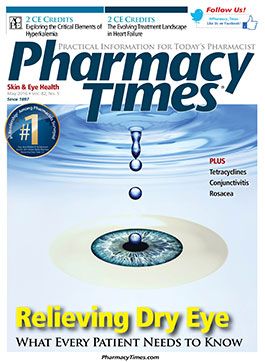Publication
Article
Pharmacy Times
HIBICLENS® at Home: An Opportunity for Extended Antimicrobial Protection Outside the Hospital
This article was sponsored by
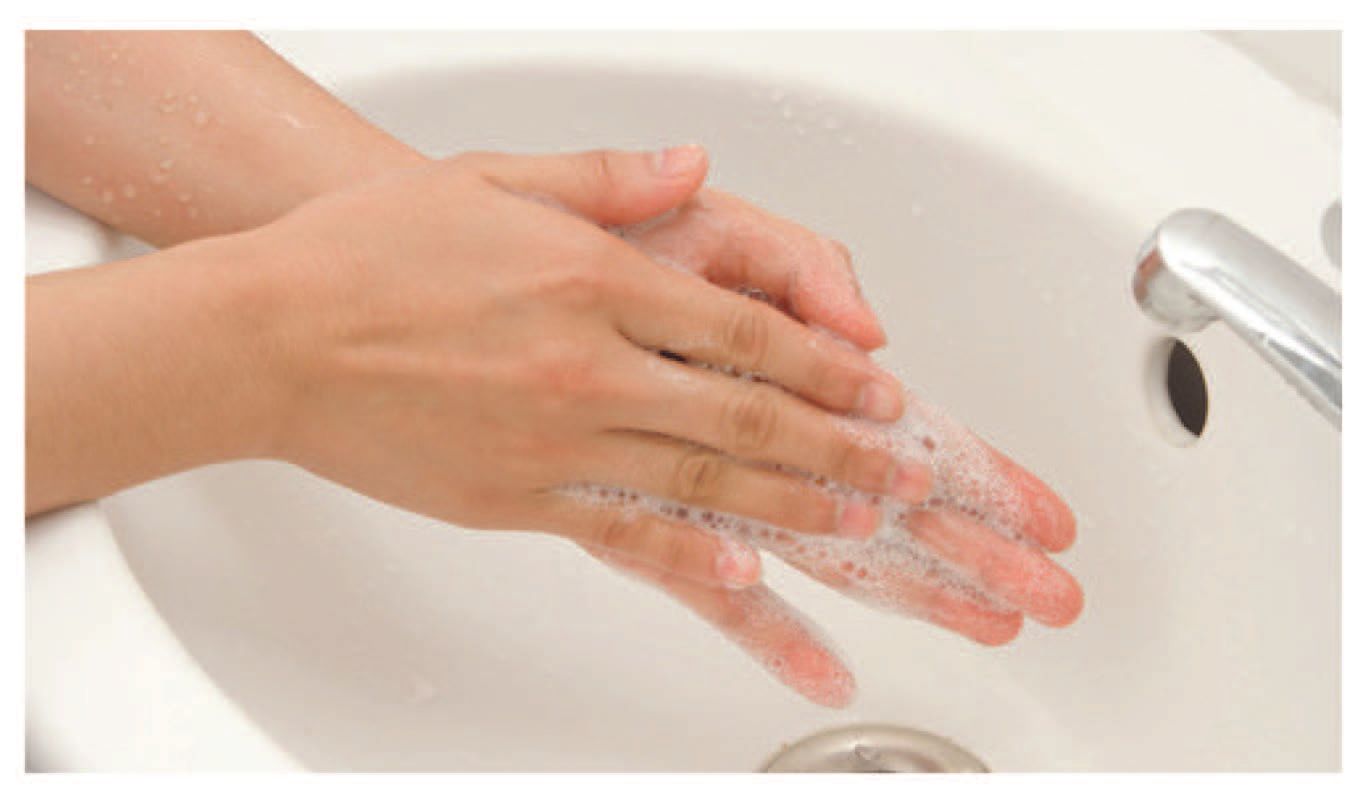
Over the course of an average day, an individual comes into contact with 300 surfaces every 30 minutes, exposing them to 840,000 microorganisms—microorganisms that may cause infection or illness.1 Among these microorganisms are Staphylococcus aureus bacteria (or “staph”), a common cause of skin infections.2,3 Certain populations may be at greater risk of developing staph infections, including athletes, students, and children in daycare. Crowding and use of shared equipment may contribute to the risk in athletic, academic, institutional, and childcare settings.4
According to the Centers for Disease Control and Prevention, appropriate personal hygiene and good hand and body washing practices can help prevent or control the spread of infectious disease.5,6 These practices are especially important for populations at greater risk of infection, such as the elderly and immunocompromised patients.7 This article will raise awareness regarding the use of HIBICLENS, a skin cleansing product with which you may already be familiar, to provide extended antimicrobial protection every day.
Options for Skin Cleansing
Ordinary soap and water may be used for everyday washing; however, soap has little to no antimicrobial activity and merely aids in removal of loosely adherent flora.8,9 To kill microbial flora, including pathogens, an antimicrobial product is needed. These products contain an agent that kills or inhibits the growth of microorganisms.8 Some products contain antibacterial agents, which are effective against bacteria, whereas other products contain antimicrobial agents, which are effective against bacteria, viruses, and fungi.10,11
Antimicrobial Ingredients
Several antimicrobial ingredients are available, with varying characteristics.12 Desirable characteristics of antimicrobials include the ability to 1) kill bacteria promptly (immediate efficacy),9 2) inhibit bacterial growth for several hours after application (persistent efficacy),9 and 3) reduce the risk of bacterial colonization and recolonization with repeated applications across several days (residual efficacy).12 Immediate, persistent, and residual efficacy are all desirable attributes of antimicrobial agents.
About Chlorhexidine
Chlorhexidine gluconate (Figure) is a cationic polybiguanide that binds to the negatively charged bacterial cell wall, disrupts the cell membrane, and induces death of the bacterial cell.8,13
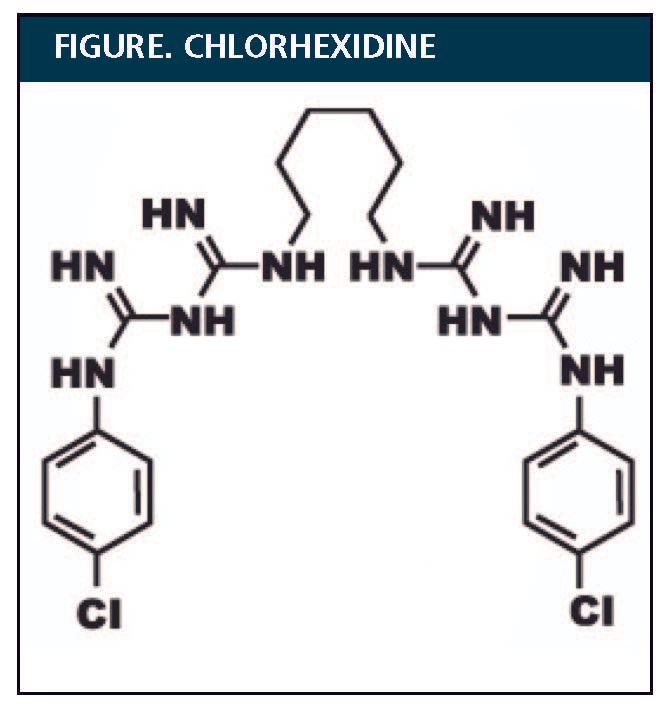
Chlorhexidine gluconate is an effective antimicrobial, with activity against bacteria, fungi, and enveloped viruses (eg, influenza).9,14 In a study evaluating the immediate, persistent, and residual antimicrobial efficacy of chlorhexidine gluconate and other antimicrobial agents, Paulson et al tested 5 antimicrobials in 30 healthy adults (chlorhexidine gluconate 2%, chlorhexidine gluconate 4%, povidone-iodine, parachlorometaxylenol, and alcohol). Chlorhexidine gluconate 2% and 4% demonstrated significant immediate effects in reducing microbial counts; a persistent effect, as indicated by continued antimicrobial effects for 24 hours after application; and a residual effect, as shown by sustained reductions in hand microbial counts over the 5-day study. A 90% or greater reduction in skin microbial counts from baseline was sustained through day 5 with chlorhexidine gluconate 4%.15,16
About HIBICLENS
You may be familiar with HIBICLENS based on its use for at-home preoperative skin cleansing and for hand washing and patient bathing in health care institutions. HIBICLENS is an OTC antimicrobial skin cleanser that contains 4% chlorhexidine gluconate, which kills bacteria (including staph) on contact and provides long-lasting antimicrobial activity.15,17 This convenient liquid product is safe for everyday use as a general skin cleanser, as it is gentle on the skin.18
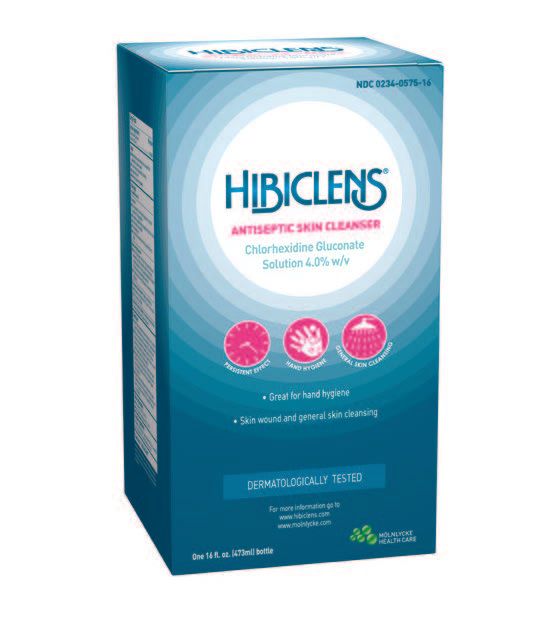
When using HIBICLENS for general skin cleansing, the area to be cleansed should be thoroughly rinsed with water, the minimum amount of the product necessary to cover the skin or wound area should be applied, and the area should be washed gently and rinsed thoroughly. Patient instructions for bathing or showering with HIBICLENS are shown in the Box.
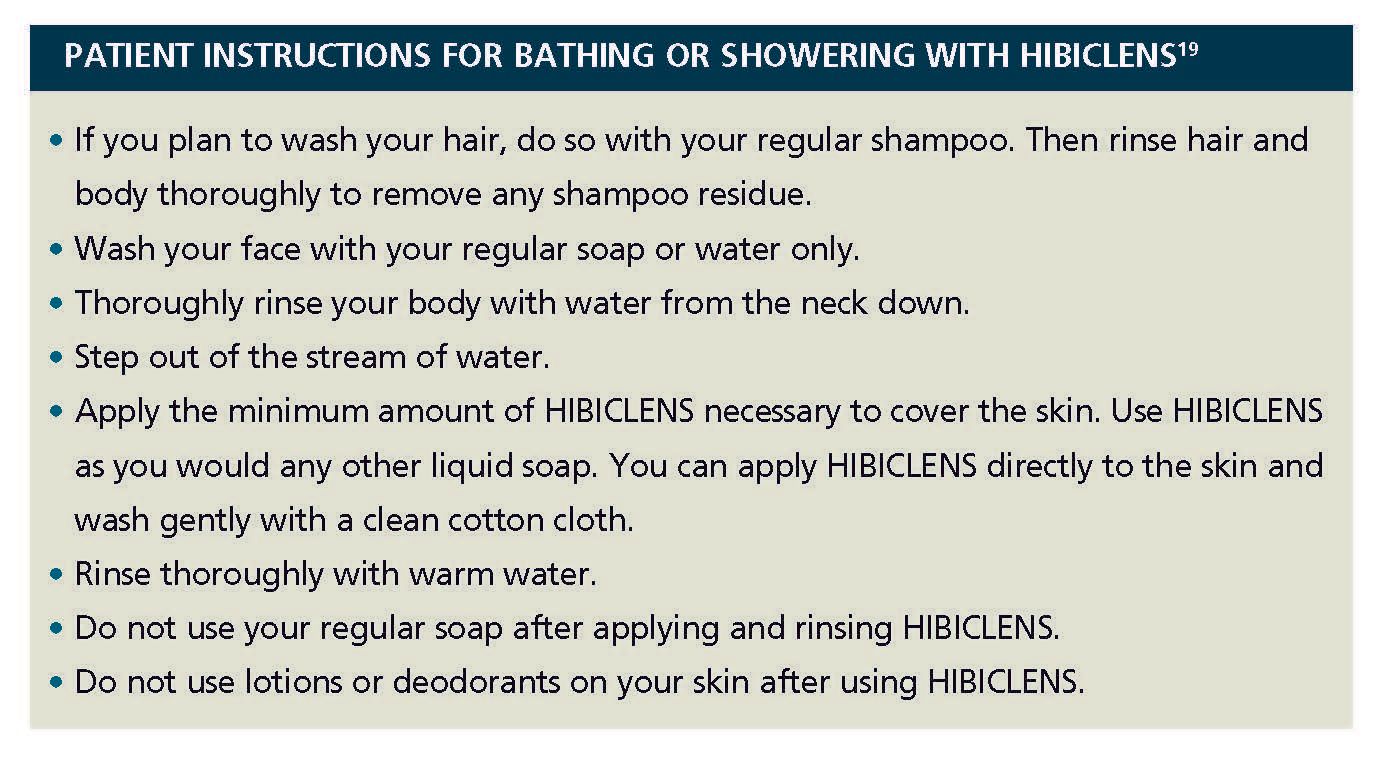
Role of the Pharmacist
Practicing good hygiene is important for everyone and clinically relevant for persons and populations at higher risk of skin infections, including the elderly, those who are immunocompromised, children in daycare, and athletes and students.4,7 When interacting with patients or other specific populations, pharmacists can counsel about the risk of skin infection and appropriate hygiene practices, including the importance of skin cleansing, and provide guidance regarding the selection of effective skin cleansing products for everyday use. As there are many products available, education is needed to help patients understand the differences among different skin cleansing options, including ordinary soaps, antibacterial cleansers, and antimicrobial cleansers. Taking into account patient needs and preferences, pharmacists can assist patients with product selection and instruct patients regarding proper use for daily hand washing and body cleansing.
Hibiclens is a registered trademark of Molnlycke Health Care.
References
- Men caught dirty-handed when it comes to good hygiene. Reuters website. reuters.com/article/idUS116204+12-Oct-2012+BW20121012. Published October 12, 2012. Accessed March 7, 2016.
- Dhar AD. Overview of bacterial skin infections. Merck Manual—Consumer Version website. merckmanuals.com/home/skin-disorders/bacterial-skininfections/overview-of-bacterial-skin-infections. Accessed February 17, 2016.
- Dryden MS. Complicated skin and soft tissue infection. J Antimicrob Chemother. 2010;65(suppl3):iii35-iii44. doi: 10.1093/jac/dkq302.
- CDC. Methicillin-resistant Staphylococcus aureus (MRSA) infections. CDC website. cdc.gov/mrsa/community/index.html. Updated September 10, 2013. Accessed February 17, 2016.
- CDC. Body hygiene. CDC website. cdc.gov/healthywater/hygiene/body/index.html. Updated February 10, 2015. Accessed February 16, 2016.
- CDC. When & how to wash your hands. CDC website. cdc.gov/handwashing/when-how-handwashing.html. Updated September 4, 2015. Accessed March 22, 2016.
- Beumer R, Bloomfield SF, Exner M, Fara GM, Nath KJ, Scott E. Guidelines for the prevention of infection and cross-infection in the domestic environment. IFH Hope Hygiene & Health website. ifh-homehygiene.org/best-practice-care-guideline/guidelines-prevention-infection-and-cross-infectiondomestic. Published 2004. Accessed March 22, 2016.
- World Health Organization. WHO guidelines on hand hygiene in health care: first global patient safety challenge clean care is safer care. WHO website. http://apps.who.int/iris/bitstream/10665/44102/1/9789241597906_eng.pdf. Published 2009. Accessed January 2016.
- Boyce JM, Pittet D. Guideline for hand hygiene in health-care settings: recommendations of the Healthcare Infection Control Practices Advisory Committee and the HICPAC/SHEA/APIC/IDSA Hand Hygiene Task Force. Infect Control Hosp Epidemiol. 2002;23(suppl 12):S3-S40.
- Antibacterial. Merriam-Webster Medical Dictionary website. merriam-webster.com/medical/antibacterial. Accessed March 22, 2016.
- CDC. About antimicrobial resistance. CDC website. cdc.gov/drugresistance/about.html. Updated September 8, 2015. Accessed March 22, 2016.
- Paulson DS. Persistent and residual antimicrobial effects: are they important in the clinical setting? Infection Control Today website. infectioncontroltoday.com/articles/2005/04/persistent-and-residual-antimicrobial-effects-are.aspx. Published April 1, 2005. Accessed February 16, 2016.
- Cheung HY, Wong MM, Cheung SH, Liang LY, Lam YW, Chiu SK. Differential actions of chlorhexidine on the cell wall of Bacillus subtilis and Escherichia coli. PLoS One. 2012;7(5):e36659. doi: 10.1371/journal.pone.0036659.
- McDonnell G, Russell AD. Antiseptics and disinfectants: activity, action, and resistance. Clin Microbiol Rev. 1999;12(1):147-179.
- Paulson DS. Comparative evaluation of five surgical hand scrub preparations. AORN J. 1994;60(2):249-256.
- Microbac Laboratory Services. Evaluation of general skin cleansing antimicrobial efficacy of a single body wash regimen using HIBICLENS. Study # 582-106, study protocol # 582.1.11.12.12. Sterling, VA: Microbac Laboratories, Inc; 2013.
- Mölnlycke Health Care. HIBICLENS drug facts. Mölnlycke Health Care United States website. molnlycke.us/antiseptics/general-skin-cleansing/hibiclens-information/hibiclens-drug-facts. Accessed March 18, 2016.
- 14-Day cumulative irritation study. San Diego, CA: PRACS Institute, Ltd; 2005. Report #R05-0225.
- Hibiclens guidelines for use. Hibiclens website. hibiclens.com/retail/education. Accessed February 16, 2016.
